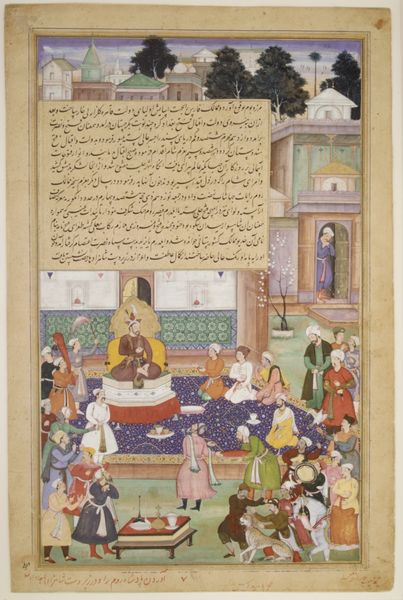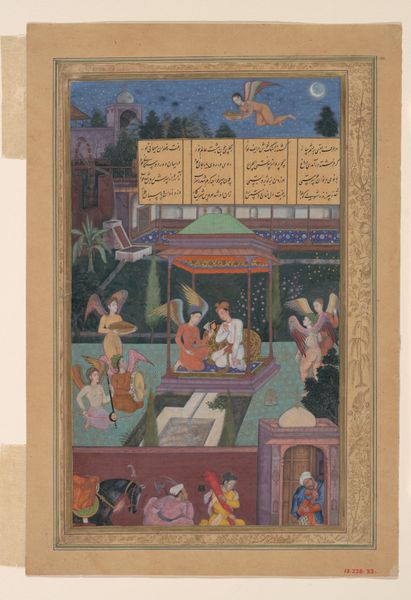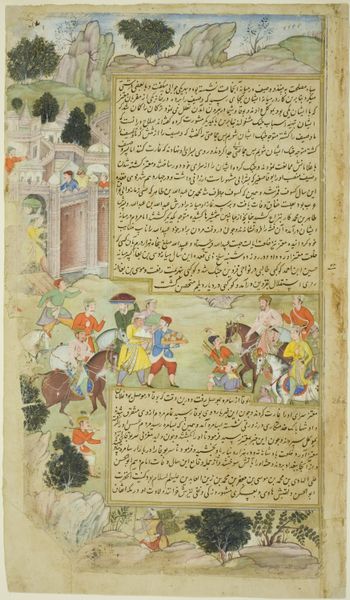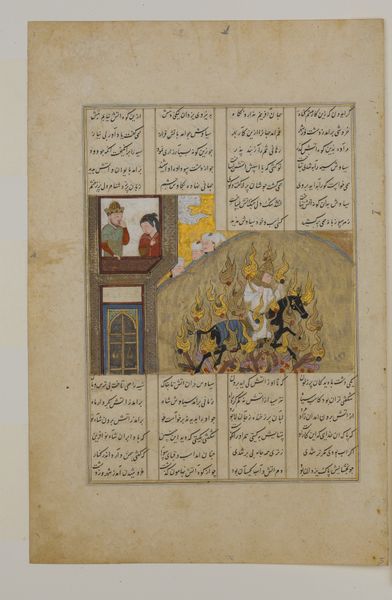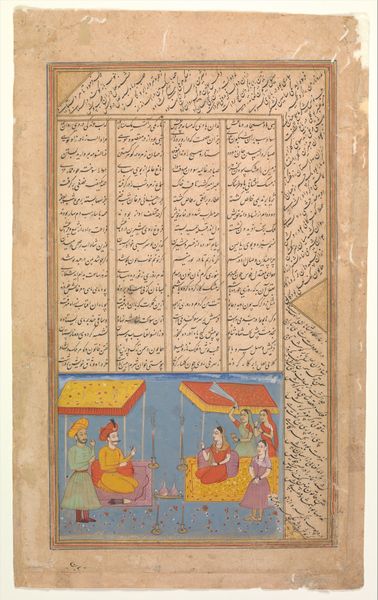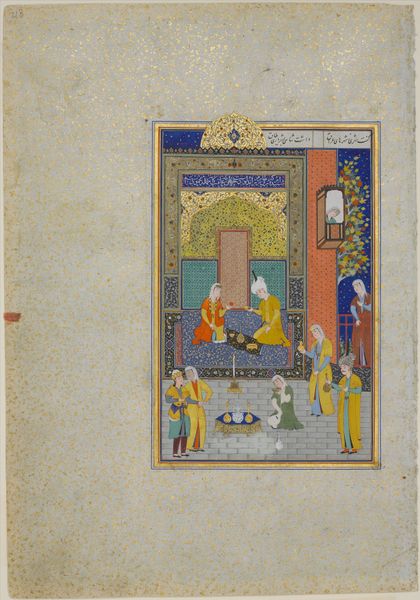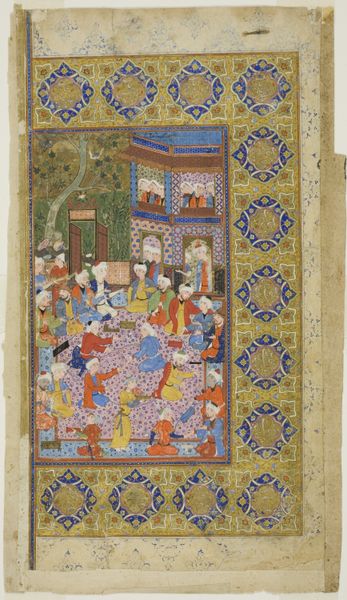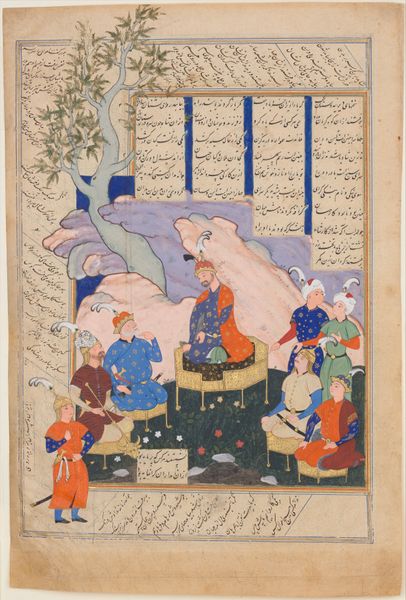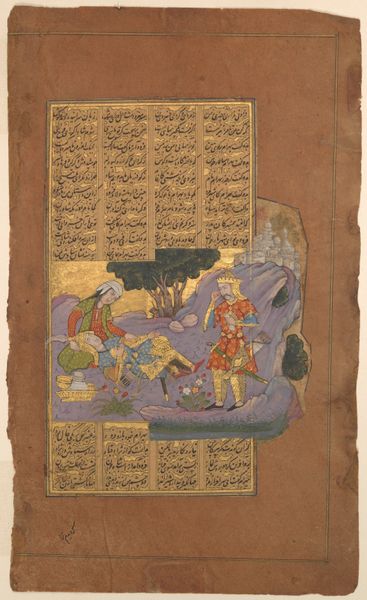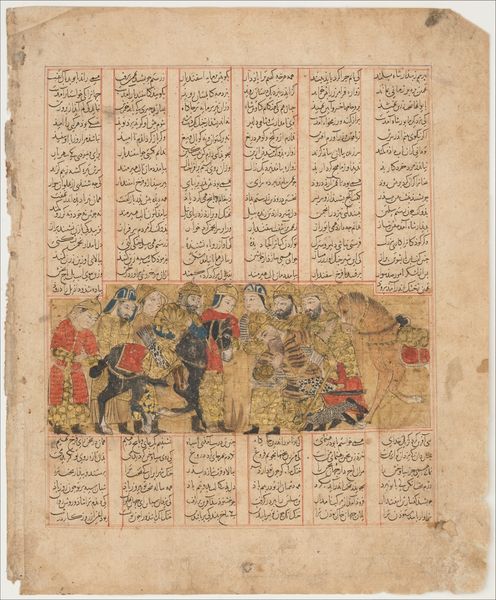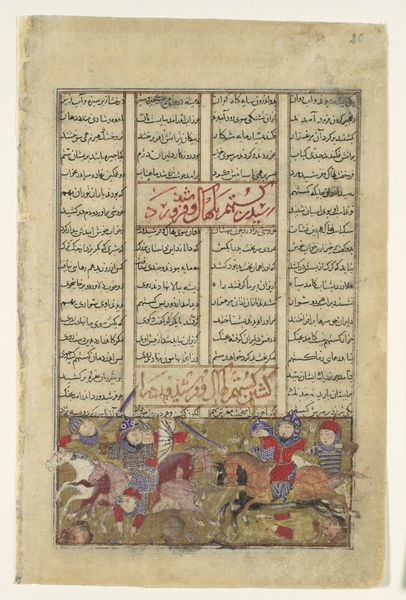
"Tumanba Khan, His Wife, and His Nine Sons", Folio from a Chingiznama (Book of Genghis Khan) 1571 - 1621
0:00
0:00
painting, paper, watercolor, ink
#
portrait
#
water colours
#
narrative-art
#
painting
#
paper
#
watercolor
#
ink
#
coloured pencil
#
naive art
#
horse
#
men
#
islamic-art
#
miniature
Dimensions: H. 15 in. (38.1 cm) W. 10 in. (25.4 cm)
Copyright: Public Domain
This Mughal-era folio, painted by Basawan around 1600, depicts Tumanba Khan amidst his family. Note the arrangement of figures and the hierarchical perspective, placing Tumanba Khan and his wife above others seated in a half-circle. The composition echoes motifs found across cultures. Consider the Last Supper, where Christ is often seated centrally, surrounded by disciples. Here, Tumanba Khan, like Christ, is the focal point, radiating authority and acting as the center of his world. This central positioning, a visual cue for power, harkens back to ancient Roman imperial imagery, and even further back, to depictions of pharaohs in ancient Egypt. The artist also employs a flattened perspective and intricate details, hallmarks of Mughal painting, that nonetheless tap into a universal visual language. Such compositional and symbolic choices tap into a collective memory, subconsciously evoking themes of leadership, lineage, and the family. It is through such symbols that we engage with this image, connecting across centuries.
Comments
No comments
Be the first to comment and join the conversation on the ultimate creative platform.
